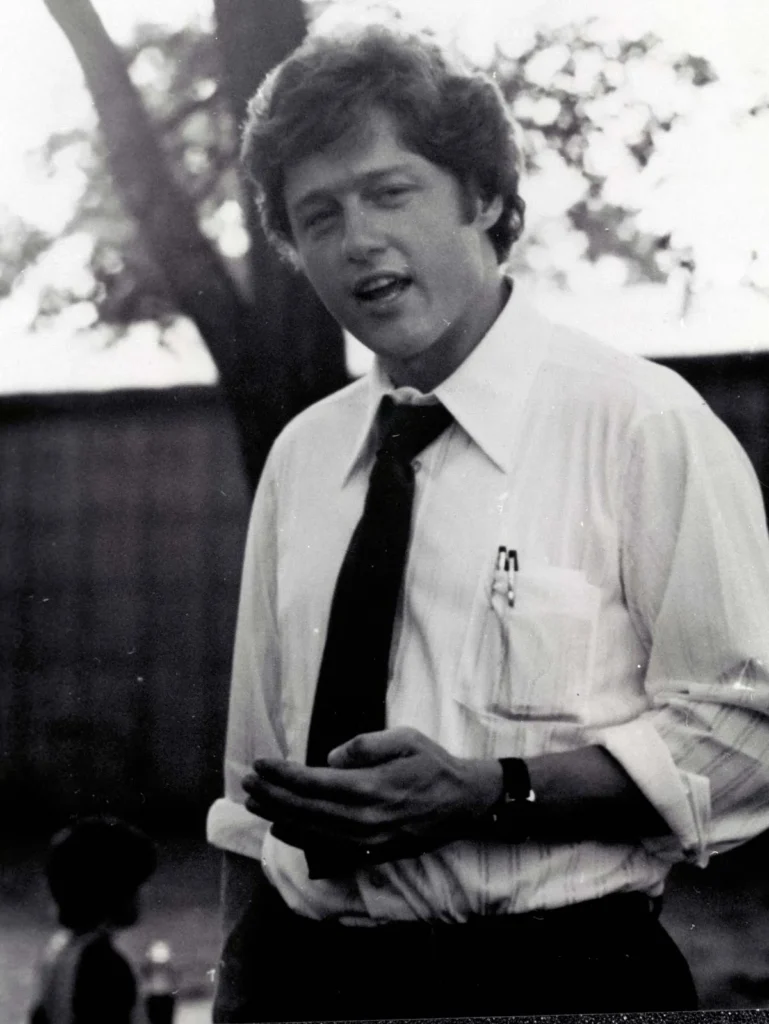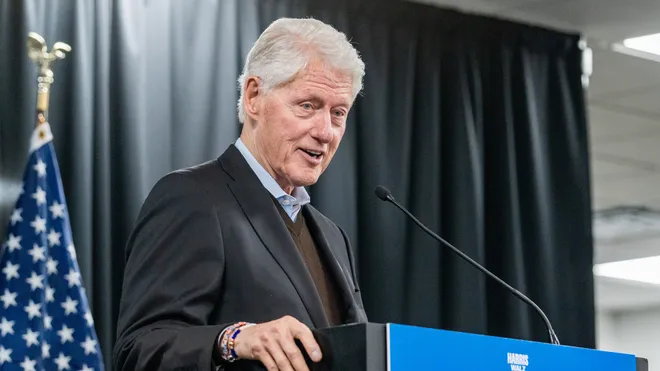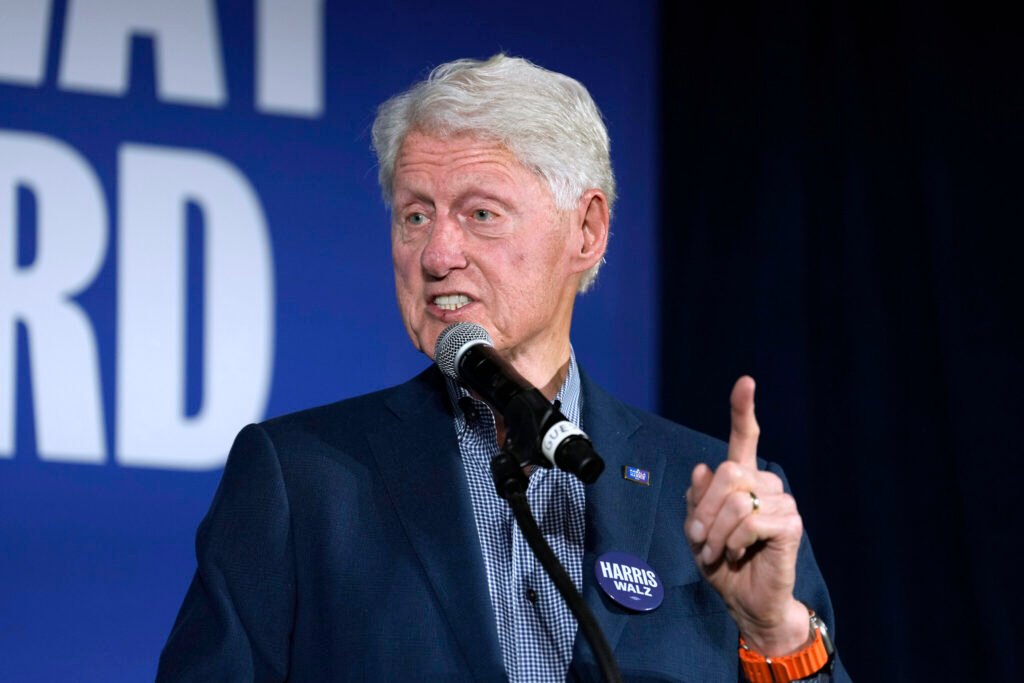Bill Clinton Then and Now
Bill Clinton Then
Bill Clinton, born William Jefferson Blythe III on August 19, 1946, in Hope, Arkansas, faced a challenging start to life.
His father died tragically in an automobile accident just three months before he was born, leaving his mother, Virginia Dell Cassidy, to raise him alone.
In search of better opportunities, Virginia moved to New Orleans to study nursing shortly after Bill’s birth, while he was brought up in Hope by his maternal grandparents, Eldridge and Edith Cassidy.
This upbringing instilled in Clinton a strong sense of family values and resilience.
When his mother returned to Arkansas in 1950, she married Roger Clinton Sr., and the family relocated to Hot Springs.
Bill adopted his stepfather’s surname, legally changing his name at the age of 15, a decision that would shape his identity as he ventured into public life.
He also welcomed a younger half-brother, Roger Clinton Jr., in 1956, further blending the familial ties that defined his early years.
Clinton’s aspirations toward public service were sparked at a young age.
A pivotal moment occurred in 1963 when he met President John F. Kennedy during a Boys Nation program in Washington, D.C.

This encounter, along with the inspiring message of Dr. Martin Luther King Jr.’s “I Have a Dream” speech, ignited his passion for politics and public service.
Motivated by these experiences, he pursued higher education with a focus on international relations. Clinton attended Georgetown University, where he earned a degree in Foreign Service.
His academic journey continued with a prestigious Rhodes Scholarship to University College, Oxford, where he expanded his horizons and deepened his understanding of global issues.
Eventually, he enrolled at Yale Law School, where he not only honed his legal skills but also met Hillary Rodham, a fellow law student who would become his lifelong partner.
During his time at Georgetown, Clinton demonstrated his leadership qualities early on, winning elections for class president in both 1964 and 1965.
Related Article: Michelle Obama Then and Now
He also gained valuable political experience by interning and clerking for Arkansas Senator J. William Fulbright.
These formative experiences not only shaped his understanding of political processes but also solidified his commitment to public service, setting the stage for his future career in politics.
Clinton’s background, characterized by early loss, familial support, and significant educational achievements, laid a strong foundation for his eventual ascent to the presidency, where he would address both national and international challenges throughout his two terms as the 42nd President of the United States.
Related Article: Jeff Flake Then and Now
Bill Clinton’s Political Career
After graduating from Yale Law School, Bill Clinton returned to Arkansas, where he began his political career as a law professor at the University of Arkansas.
His initial foray into politics came in 1974 when he ran for a seat in the U.S. House of Representatives. Although he lost narrowly to the incumbent Republican John Paul Hammerschmidt, Clinton’s determination did not wane.
In 1976, he successfully ran for Arkansas Attorney General, winning the position without any opposition in the general election.
This role provided him with valuable experience in public service and law, paving the way for his future ambitions.
Related Article: John Hickenlooper Then and Now
Just two years later, in 1978, Clinton made history by becoming the youngest governor in the United States at the age of 32 when he defeated Republican candidate Lynn Lowe.
His governorship marked a significant turning point in his political trajectory, as he focused heavily on education and healthcare reform, which garnered national attention and laid the groundwork for his future presidential aspirations.
Clinton’s rise in national politics was swift. His successful governorship and commitment to progressive policies positioned him as a potential presidential candidate.
By 1988, he was being considered as a serious contender for the presidency, though he ultimately decided against running that year.
Related Article: Larry Hogan Then and Now
However, by 1992, Clinton was ready to mount a campaign for the presidency, running against the incumbent, President George Herbert Walker Bush.
His campaign emphasized economic issues and a vision for change, resonating with voters amid a struggling economy.
Clinton won the election, taking office in January 1993, with Al Gore as his Vice President.
During his first term, which lasted until 1997, he made significant legislative achievements, including the signing of the Family and Medical Leave Act and the Brady Bill, which implemented gun control measures.
He also expanded the earned income tax credit, providing financial relief to working families, and appointed two justices to the Supreme Court, Ruth Bader Ginsburg and Stephen Breyer.
Related Article: Tom Wolf Then and Now
Clinton’s second term, which began in 1997, was marked by both accomplishments and controversies.
Despite a strong economy and high approval ratings—leaving office with a 66% approval rating, the highest for any president since World War II—his presidency was marred by scandal.
In December 1998, the House of Representatives impeached him on charges of perjury and obstruction of justice related to his extramarital affair with White House intern Monica Lewinsky.
Although he was impeached, the Senate acquitted him, allowing him to remain in office.
Clinton became only the second U.S. president to be impeached, joining Andrew Johnson in the history books, with Donald Trump later becoming the third.
Related Article: Sheldon Whitehouse Then and Now

Despite the impeachment, Clinton’s presidency is often ranked in the middle to upper tier in historical evaluations, reflecting his complex legacy that includes economic prosperity and significant social policies alongside personal controversies.
Following his presidency, Clinton remained active in public life through various initiatives and charitable efforts.
He established the Clinton Foundation, focusing on pressing global issues such as HIV/AIDS prevention, climate change, and economic development. In 2009, he took on the role of United Nations special envoy to Haiti, furthering his commitment to humanitarian causes.
Clinton also collaborated with former Presidents George W. Bush and Barack Obama to create the Clinton-Bush Haiti Fund after the devastating earthquake in 2010.
Related Article: Ron Wyden Then and Now
He continued to play a prominent role in Democratic Party politics, supporting his wife, Hillary Clinton, during her presidential campaigns in 2008 and 2016.
Although she secured the Democratic nomination in 2016, she ultimately lost the election to Donald Trump.
Clinton’s post-presidential years have also included a focus on writing, with published works that encourage civic engagement and address the importance of effective government.
Related Article: Henry McMaster Then and Now
His autobiography, “My Life” (2004), along with other books such as “Giving: How Each of Us Can Change the World” (2007) and “Back to Work: Why We Need Smart Government for a Strong Economy” (2011), reflect his ongoing commitment to public service and advocacy for social causes.
In recent years, Clinton has collaborated with other former presidents in charitable initiatives, such as the One America Appeal launched in 2017 to aid hurricane victims.
Through these efforts, he has sought to harness the collective influence of past presidents to address contemporary challenges, demonstrating his enduring impact on American politics and society.
Related Article: Janet Mills Then and Now
Bill Clinton’s Wife and Children
Bill Clinton married Hillary Rodham on October 11, 1975, marking the beginning of a partnership that would become one of the most prominent in American political history.
Hillary, a fellow law student at Yale, shared Bill’s passion for public service and advocacy, and together they navigated the complexities of political life and family.
Their only child, Chelsea Clinton, was born on February 27, 1980, adding a new dimension to their lives as they balanced parenting with their respective careers in law and politics.
Related Article: Liz Cheney Then and Now
Chelsea grew up in the public eye, witnessing her parents’ rise to prominence, particularly during Bill’s tenure as governor and later as president. As Chelsea pursued her own education and career—eventually becoming an accomplished author and advocate—Bill and Hillary took great pride in their daughter’s achievements.
In addition to their strong familial bond, Bill has embraced the role of grandfather to Chelsea’s three children, fostering a close-knit family dynamic that underscores the values of love and support that have always been central to the Clinton household.
This aspect of Bill’s life reflects his commitment to family and the continuity of his legacy through his children and grandchildren.
Related Article: Mike Lee Then and Now
Bill Clinton Now

At 78 years old, Bill Clinton remains an influential figure in American politics and public life.
Having served as the 42nd president of the United States from 1993 to 2001, he left a significant mark on the nation, particularly through his focus on economic prosperity and social reforms.
Even after his presidency, Clinton’s commitment to public service and civic engagement has continued unabated.
He has been active in various global initiatives, leveraging his experience and connections to address pressing issues such as poverty, climate change, and healthcare through the Clinton Foundation and other charitable endeavors.
Related Article: Michelle Lujan Grisham Then and Now
In the years following his presidency, Clinton has traveled extensively, participating in speaking engagements around the world.
His talks often center on themes of leadership, global citizenship, and the importance of civic engagement, drawing from his vast experiences in office and beyond.
He has also turned to writing, publishing several books that reflect on his presidency, the lessons learned from his political career, and the importance of individual responsibility in making a positive impact on society.
Works such as “My Life” (2004) and “Giving: How Each of Us Can Change the World” (2007) encourage readers to engage with their communities and consider their roles in fostering change.
Related Article: Bill Lee Then and Now
Moreover, Clinton has remained active in Democratic Party politics, often campaigning for candidates and initiatives aligned with his values.
He played a key role in his wife Hillary Clinton’s presidential campaigns in 2008 and 2016, advocating for policies focused on healthcare reform, women’s rights, and economic opportunity.
His ongoing involvement underscores his enduring legacy in American politics, as he continues to influence the political landscape and inspire future generations to engage in public service and advocate for the causes they believe in.
Clinton’s life after the presidency exemplifies his dedication to service and his belief in the power of collective action to bring about meaningful change in society.
Related Article: Brian Kemp Then and Now
Bill Clinton’s Net Worth
Bill Clinton, the 42nd president of the United States, boasts a net worth estimated at $120 million, reflecting his successful career in politics, lucrative speaking engagements, and numerous book deals since leaving office.
Related Article: Tim Kaine Then and Now
FAQs
Bill Clinton is known by the name “Bill,” a common diminutive for William, his given name at birth (William Jefferson Blythe III). He adopted the surname “Clinton” from his stepfather when he was a teenager.
Bill Clinton was 46 years old when he was inaugurated as president on January 20, 1993.
Bill Clinton completed his presidency on January 20, 2001, after serving two terms in office.
Since leaving office, Bill Clinton has remained active in public life, engaging in speaking tours, writing books, and working on humanitarian efforts through the Clinton Foundation, focusing on global health, climate change, and economic development.






























